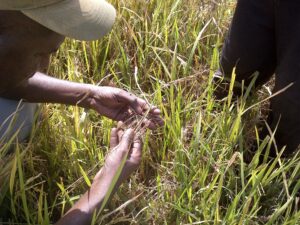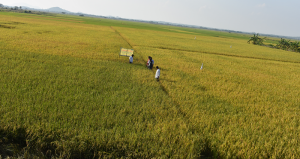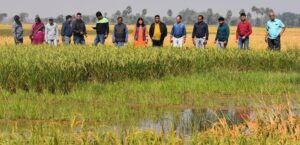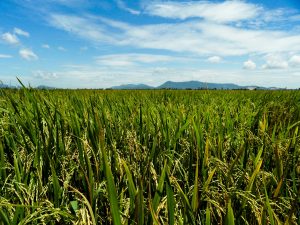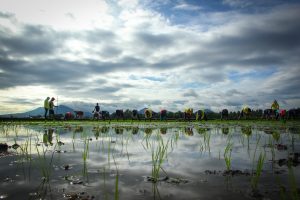
On average, each person in the world consumes more than 50 kilograms of rice a year (see FAOSAT Food supply quantity data).
But, this average hides the massive variability in consumption patterns around the world. The map (below) shows an unusual view of the world in which each territory has been distorted based on the proportion of the world’s rice that is consumed there (see more examples of cartograms in which territories are re-sized on each map according to the subject of interest). The coloring in the map represents the consumption per capita, so the map shows two key pieces of information that dictate rice consumption patterns.

Asia has a large share of the world’s population and has high rates of consumption. China and India alone account for more than 50% of the world’s rice consumption (see Fig. 2 below). But, they are by no means the highest consumers per capita (see Table below). Higher rates are found in much of South and Southeast Asia, West Africa, Madagascar, and Guyana. Several of these countries have per capita consumption rates over 100 kilograms per year, and Brunei tops the table at more than 20 kilograms per capita per month, compared with rates in Europe of less than 0.5 kilogram per month.

Although per capita consumption has always been high in Asia, it has more than doubled in the rest of the world over the last 50 years. As we approach a world population of 7 billion, these geographic trends in rice consumption reveal new challenges and opportunities for rice production around the world.

